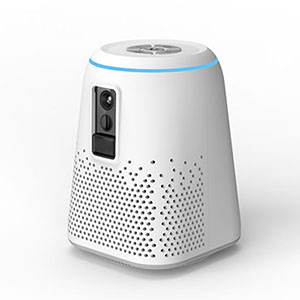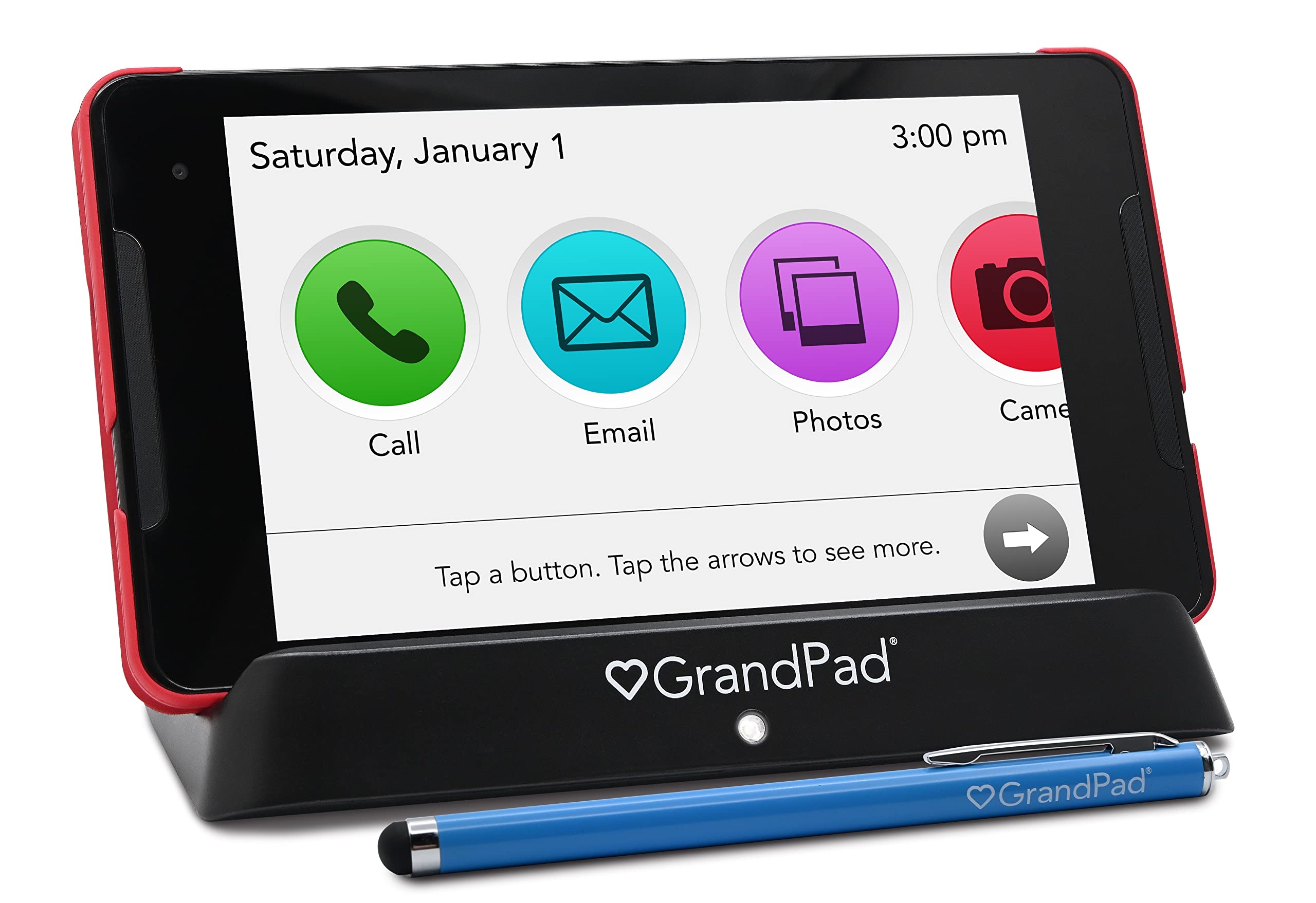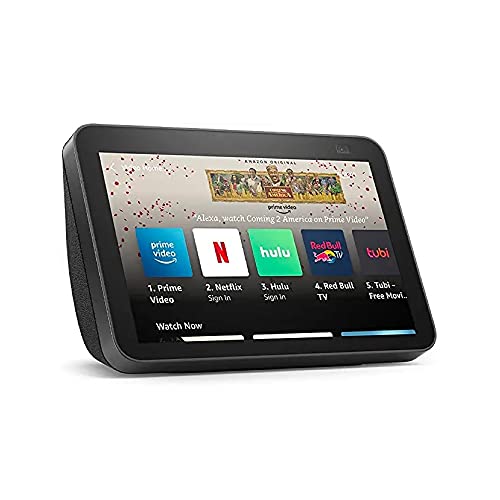In today's digital age, video calling has become an essential tool for staying connected with family and friends, especially during times of social distancing and isolation. For elderly individuals, who may be more susceptible to loneliness and social isolation, video calling provides a lifeline to their loved ones, even when they are physically distant. Video calling enables seniors to see and hear their family and friends, helping to combat feelings of isolation and loneliness, and boosting their overall well-being.
However, some elderly individuals may find video calling technology challenging to navigate, especially if they are not familiar with smartphones, tablets, or computers. This is where easy video calling devices come in. These devices are designed with seniors in mind, featuring user-friendly interfaces, larger screens, and simplified features that make video calling more accessible and less intimidating for elderly individuals.
Choosing the right device for easy video calling is crucial to ensuring that seniors can enjoy the benefits of this technology. In this article, we will explore some of the best devices for easy video calling and provide tips on how to use them effectively with elderly individuals. Whether you are a caregiver or a family member, we hope this guide will help you stay connected with your elderly loved ones using video calling technology.
I. Best devices for easy video calling
There are several devices available that are specifically designed for elderly individuals who may find traditional video calling technology challenging to use. These devices feature simplified interfaces, larger screens, and other accessibility features that make video calling easier for seniors. Here are three of the best devices for easy video calling:
HC1 Home Care Hub: The HC1 Home Care Hub is an all-in-one device that combines a video calling system with a range of other functions, including health monitoring, medication reminders, and emergency response features. The device is designed to be simple and intuitive to use, with large, easy-to-read buttons and a clear interface.
One of the key features of the HC1 Home Care Hub is its auto-answer function, which allows calls to be answered automatically without requiring the user to press any buttons. This can be particularly helpful for elderly individuals who may have difficulty with manual dexterity or may forget to answer incoming calls.
Another useful feature of the HC1 Home Care Hub is its ability to connect to a range of other devices, such as Bluetooth-enabled blood pressure monitors or pulse oximeters. This allows for easy health monitoring and can provide peace of mind for both the user and their caregivers.

GrandPad Tablet: The GrandPad tablet is a senior-friendly device designed to help elderly individuals stay connected with their loved ones. It features a large 8-inch touchscreen display, simplified interface, and intuitive navigation, making it easy to use even for those who are not tech-savvy. The tablet comes with a built-in 4G LTE connection, so there's no need for Wi-Fi or a separate data plan. It also has a 5-megapixel front-facing camera and a 2-megapixel rear-facing camera for video calling, as well as an optional stylus for easier navigation.

Amazon Echo Show: The Amazon Echo Show is a smart home device that features a 10-inch HD screen, built-in speakers, and a camera for video calling. It is designed to be hands-free, so users can activate it with voice commands and make video calls without needing to use their hands. The Echo Show also comes with Alexa, Amazon's virtual assistant, which can assist with medication reminders, weather updates, and other tasks.

II. Considerations for choosing a device for elderly video calling
When choosing a device for video calling with elderly individuals, there are several factors to consider. Here are some key considerations to keep in mind:
Ease of Use: Seniors may find traditional technology intimidating or difficult to use, so it's important to choose a device that is easy to navigate and has a simple interface. Look for devices that have larger buttons, clear instructions, and straightforward menus.
Compatibility: Make sure the device you choose is compatible with the senior's needs and abilities. For example, if the senior has vision impairments, you may need to look for a device with a larger screen or adjustable font sizes.
User Interface Design: A clear and easy-to-use user interface is crucial for elderly individuals. Look for devices that have intuitive navigation, straightforward menus, and visual cues that make it easy to navigate and understand.
Camera Quality: Good video calling relies on a high-quality camera. Look for devices with cameras that have a high resolution and can capture clear, sharp images.
Audio Quality: Clear audio is also essential for effective video calling. Choose a device with a good microphone that can pick up the senior's voice clearly and a speaker that can play back audio loudly and clearly.
Connectivity: Some devices may require a Wi-Fi connection or a data plan, while others may have built-in 4G or LTE connections. Make sure the device you choose is compatible with the senior's internet connection or data plan.
Auto-Answer Function: Some devices come with an auto-answer function, which means that the device will automatically answer incoming video calls without requiring the senior to do anything. This can be a great feature for seniors who may have difficulty answering calls on their own.
Price: Finally, consider the cost of the device. While there are many affordable options available, some devices may be more expensive than others. Look for a device that meets your needs and budget.
By considering these factors when choosing a device for video calling with elderly individuals, you can help ensure that the device is easy to use, effective, and enhances the senior's overall well-being by keeping them connected with loved ones.
III. Tips for using video calling with elderly individuals
Using video calling with elderly individuals can be a great way to stay connected with loved ones who may live far away or who are unable to visit in person. Here are some tips to help make the experience as enjoyable and easy as possible:
Choose the Right Time: Make sure to schedule the video call at a time that is convenient for the senior. Avoid scheduling calls during times when the senior may be napping or resting.
Test the Connection: Test the device and internet connection before the call to ensure that everything is working properly. This can help prevent frustrating technical issues during the call.
Keep it Simple: Keep the conversation simple and easy to follow. Speak clearly and at a normal volume, and avoid using complex language or technical terms that may be confusing.
Be Patient: Elderly individuals may need more time to process information or respond to questions. Be patient and give the senior plenty of time to respond and participate in the conversation.
Use Visual Aids: If necessary, use visual aids such as photos or drawings to help illustrate a point or make a connection with the senior.
Be Prepared: Before the call, prepare some topics or questions to discuss with the senior. This can help keep the conversation flowing and prevent awkward silences.
Consider Background Noise: Make sure to choose a quiet location for the call, and avoid background noise or distractions that may be distracting or difficult for the senior to hear.
Be Empathetic: Finally, be empathetic and understanding of the senior's needs and limitations. Video calling can be a great way to stay connected, but it may also be overwhelming or stressful for some individuals. Make sure to take the senior's feelings and preferences into account during the call.
By following these tips, you can help make the experience of using video calling with elderly individuals enjoyable and effective. Video calling can be a great way to stay connected with loved ones and enhance the senior's overall well-being, so it's important to approach it with patience, understanding, and empathy.
IV.Conclusion
In conclusion, video calling devices can be a fantastic way for elderly individuals to stay connected with loved ones and enhance their overall well-being. With so many options available on the market today, it's important to choose a device that is easy to use, has simple controls, and provides a clear and reliable connection. When selecting a device, it's also important to consider the individual needs and preferences of the elderly user, as well as any specific health conditions or limitations they may have.
Once you have a suitable device, following the tips outlined in this article can help make the video calling experience with elderly individuals as enjoyable and effective as possible. By choosing the right time, testing the connection, keeping the conversation simple, being patient, using visual aids, being prepared, considering background noise, and being empathetic, you can help make the most of video calling technology and keep elderly loved ones connected with family and friends.
Overall, video calling devices are an important tool for promoting social connectedness and reducing social isolation among the elderly population. By taking the time to choose the right device and using it effectively, you can help enhance the well-being and quality of life for the seniors in your life.












